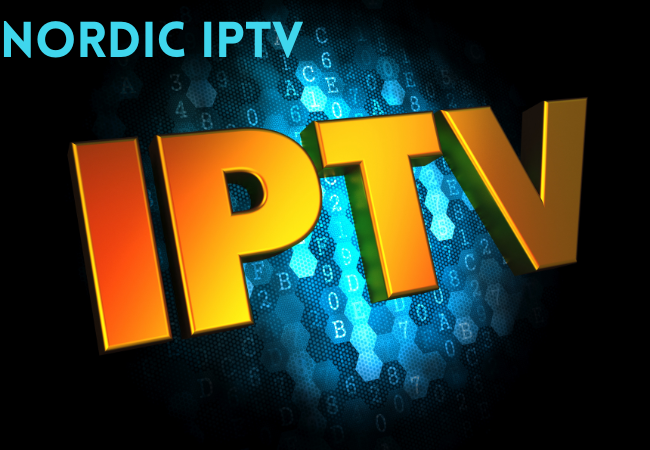Nordic IPTV: Unlock the Best Streaming Experience in the North

In the digital age, traditional television is increasingly giving way to more flexible, internet-based streaming solutions. One of the most popular options in this space is IPTV, or Internet Protocol Television. Particularly in the Nordic region, IPTV has gained significant traction, offering viewers a broad spectrum of channels and on-demand content. This article delves into the world of Nordic IPTV, exploring its features, benefits, and considerations, helping you make an informed choice for your streaming needs.
What is Nordic IPTV?
Definition and Concept
Nordic IPTV stands for Internet Protocol Television, a system where digital television service is delivered to subscribers through the internet using IP addresses. Unlike traditional broadcast methods, IPTV allows for a more interactive and customizable viewing experience.
How IPTV Works
IPTV works by transmitting television programs and videos via the internet, which users can access using a compatible device, such as a smart TV, smartphone, or computer. This method enables streaming of live broadcasts and on-demand content, which can be paused, rewound, or fast-forwarded.
Comparison with Traditional TV
Compared to traditional cable or satellite TV, IPTV offers greater flexibility. Users can choose from a wide array of channels and packages, often at a lower cost. Additionally, IPTV services typically provide better picture quality and more innovative features, such as video-on-demand and digital recording.
Overview of Nordic IPTV
Introduction to Nordic IPTV
Nordic IPTV refers to the IPTV services available in the Nordic countries—Denmark, Finland, Iceland, Norway, and Sweden. These services have become increasingly popular, providing access to a diverse range of content, including local channels, international broadcasts, and specialized sports or entertainment packages.
Popularity and Growth in the Nordic Region
The growth of Nordic IPTV can be attributed to the region’s high internet penetration and tech-savvy population. With an increasing number of households cutting the cord from traditional TV services, IPTV has become a preferred alternative, offering flexibility and a rich viewing experience.
Key Features of Nordic IPTV Services
Nordic IPTV services are known for their robust channel offerings, including both free and premium channels. They also feature high-definition streaming, multi-device compatibility, and user-friendly interfaces. Moreover, these services often include unique content tailored to Nordic audiences, such as local news, movies, and sports.
Benefits of Using Nordic IPTV
Access to a Wide Range of Channels
One of the primary benefits of Nordic IPTV is the vast selection of channels available. Users can access both local and international channels, ensuring a comprehensive entertainment experience.
High-Quality Streaming
Nordic IPTV providers typically offer high-quality streaming options, including HD and 4K resolutions. This ensures a superior viewing experience, particularly important for live sports and movies.
On-Demand Content and Flexibility
Another significant advantage is the availability of on-demand content. Users can watch their favorite shows, movies, and sports events at their convenience, without being tied to a specific broadcast schedule.
Challenges and Considerations
Legal Aspects and Copyright Issues
While IPTV offers many benefits, it also raises legal concerns, particularly regarding copyright and licensing. Users should ensure that their IPTV provider is legitimate and complies with local laws to avoid potential legal issues.
Technical Requirements
To enjoy IPTV, certain technical requirements must be met, including a reliable internet connection and compatible devices. Inadequate internet speeds or outdated hardware can lead to subpar viewing experiences.
Potential Service Disruptions
Service disruptions, such as buffering or outages, can occur, especially during peak usage times or due to network issues. It’s essential to choose a reputable IPTV provider that offers reliable service and customer support.
Choosing the Right Nordic IPTV Service
Factors to Consider
When selecting a Nordic IPTV service, consider factors such as channel selection, streaming quality, subscription costs, and customer support. Additionally, ensure that the service is legal and offers good value for money.
Popular Providers in the Nordic Region
Several providers dominate the Nordic IPTV market, each offering unique features and packages. Some well-known names include Telenor, Telia, and Com Hem, among others. Comparing these providers can help you find the best fit for your needs.
Subscription Plans and Pricing
Nordic IPTV services typically offer various subscription plans, ranging from basic packages with limited channels to premium plans with extensive offerings. Prices vary accordingly, and users should choose a plan that fits their budget and viewing preferences.
Setting Up Nordic IPTV
Necessary Equipment and Devices
Setting up Nordic IPTV requires certain equipment, such as a compatible smart TV, streaming device, or computer. Additionally, a stable internet connection is crucial for uninterrupted streaming.
Installation Process
The installation process for IPTV services is generally straightforward. Users need to connect their device to the internet, download the IPTV app, and log in using their subscription credentials. Some providers may offer installation support or guides to assist with the setup.
Troubleshooting Common Issues
Common issues with IPTV services include buffering, freezing, and login problems. To troubleshoot these issues, ensure that your internet connection is stable and that your device meets the technical requirements. Restarting the device or contacting customer support can also help resolve issues.
Nordic IPTV and Internet Speed
Importance of Internet Speed
A critical factor in the IPTV experience is internet speed. Insufficient bandwidth can lead to buffering and poor video quality, detracting from the viewing experience.
Recommended Speeds for Optimal Streaming
For a smooth streaming experience, a minimum internet speed of 10 Mbps is recommended for HD content, while 25 Mbps or higher is ideal for 4K streaming. Higher speeds ensure better stability and allow for multiple devices to stream simultaneously.
Future of IPTV in the Nordic Region
Emerging Trends
The future of IPTV in the Nordic region looks promising, with trends such as increased adoption of 4K and HDR content, integration with smart home devices, and the rise of interactive features like personalized recommendations.
Technological Advancements
Technological advancements are set to further enhance IPTV services, including improvements in streaming quality, the development of more efficient compression technologies, and the expansion of fiber optic networks, which can deliver faster and more reliable internet.
Regulatory Changes
As IPTV becomes more popular, regulatory frameworks may evolve to address issues such as content licensing, consumer protection, and data privacy. These changes will shape the future landscape of IPTV services in the region.
FAQs about Nordic IPTV
What is the difference between IPTV and cable TV?
IPTV streams content over the internet, providing more flexibility and often a wider range of channels compared to cable TV, which relies on traditional broadcasting methods.
Is Nordic IPTV legal?
Yes, Nordic IPTV is legal, provided the service complies with copyright and licensing regulations. It’s crucial to choose a legitimate provider to avoid legal issues.
Can I use Nordic IPTV outside the Nordic region?
Usage outside the Nordic region depends on the provider and the specific licensing agreements. Some services may be geo-restricted, while others allow access with a VPN.
What devices are compatible with Nordic IPTV?
Nordic IPTV can be accessed on various devices, including smart TVs, streaming devices (like Roku or Apple TV), smartphones, tablets, and computers.
How can I improve streaming quality on Nordic IPTV?
To improve streaming quality, ensure a stable and high-speed internet connection, use updated devices, and consider connecting via Ethernet rather than Wi-Fi for better stability.




